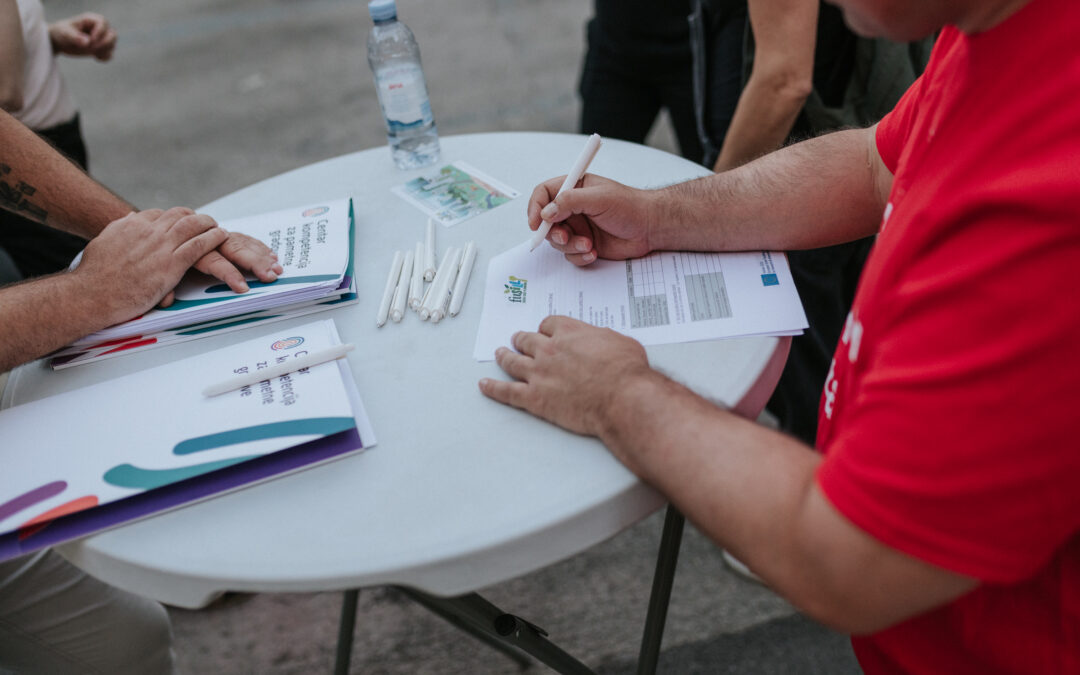People and their food habits
Dietary preferences, personal income, general lifestyle, leisure time, and cultural and traditional values influence our eating habits. These characteristics can determine how we purchase food. For example, whether we shop monthly in large quantities and with a lot of planning because that’s what our parents did. Or maybe we shop daily, depending on what we want to prepare and eat.
Some of us prepare all our meals for the upcoming week on the weekend because we don’t have time to cook every day.
Some of us pay attention to recycling and reducing food waste, while others don’t think much about it and just throw away food we don’t use. With this in mind, many of us here in the Mediterranean/Balkan region prepare tons of food for every meal, especially when we entertain guests, because “you have to fill people up” and show abundance.
There are a lot of things that determine people’s relationship with food. And to try to change habits and achieve a different way of dealing with food, it is important to know how people usually behave. That is why, within the framework of the Fusilli Project in Rijeka, we started to survey the eating habits of our citizens.

Citizens filling out the survey at FUSILLI Rijeka's stand
The survey
The survey was launched as part of our collaboration with the Porto Etno Festival and is an ongoing project. People are now participating online by filling out a questionnaire, and they can do so until the end of October.
The questions cover some main topics, and we used them to try to identify trends that are prevalent in our city:
-
-
- Demographics
- Food preferences – how often do they eat meat or fish
- Food shopping – where do people shop most often
- What is important to them when choosing food
- How often do they prepare food themselves
- Do they prepare food in advance or reuse meals or freeze them
- What do they think about composting
- Do they buy too much or throw away food they didn’t use
-
Results
The vast majority of participants were female (87%) and the predominant age group was between 25 and 54 years, with 20% in the 25-34 age group, 26% in the 35-44 age group, and 20% in the 45-54 age group. 54% of all participants have a university degree and 72% are employed.
Rijeka is a Mediterranean city, a city by the sea with a large fresh fish market:
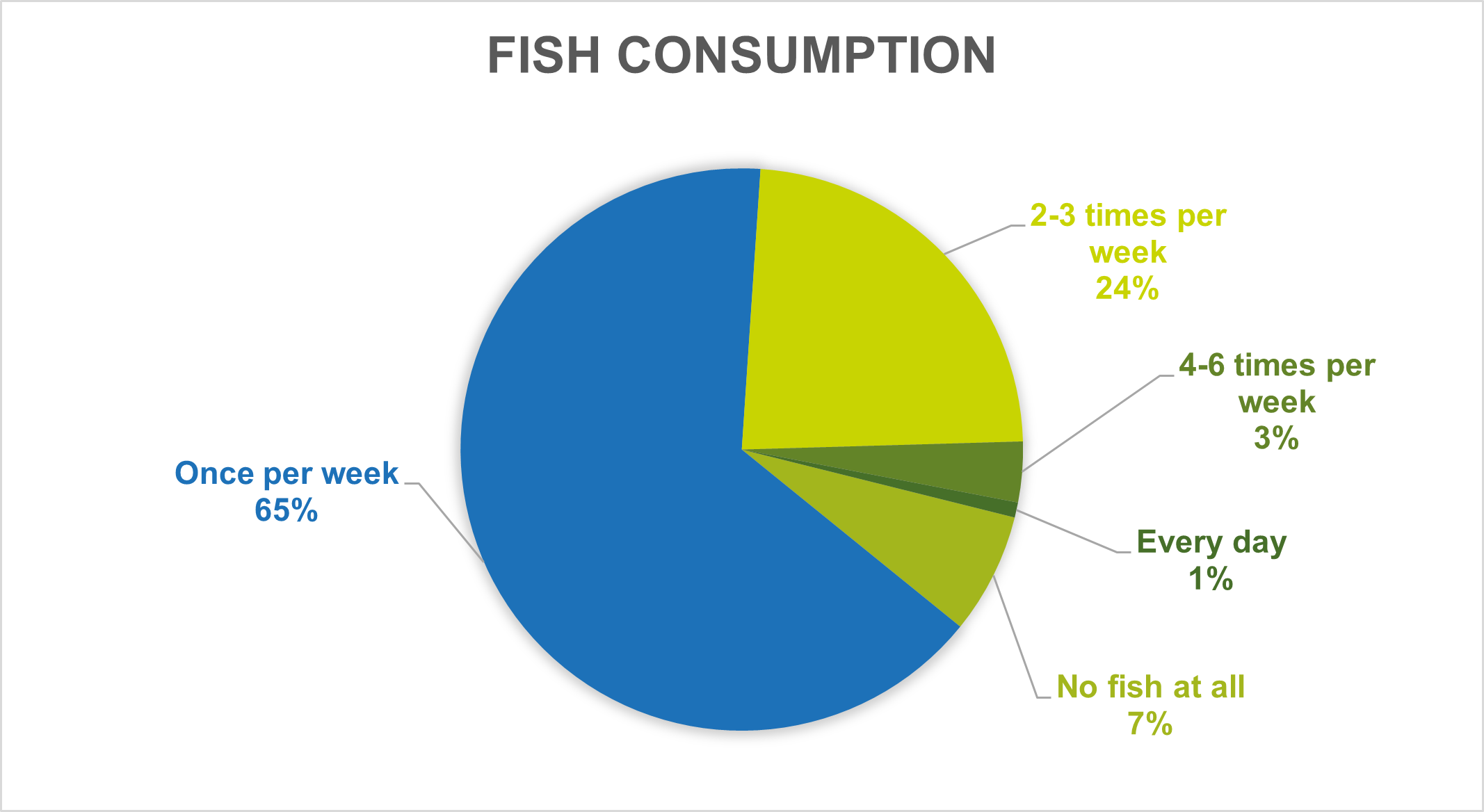
But our participants eat fish only once a week (65%), while only 3% of them eat fish three to four times a week.
On the other hand, according to the survey, much more meat is eaten:
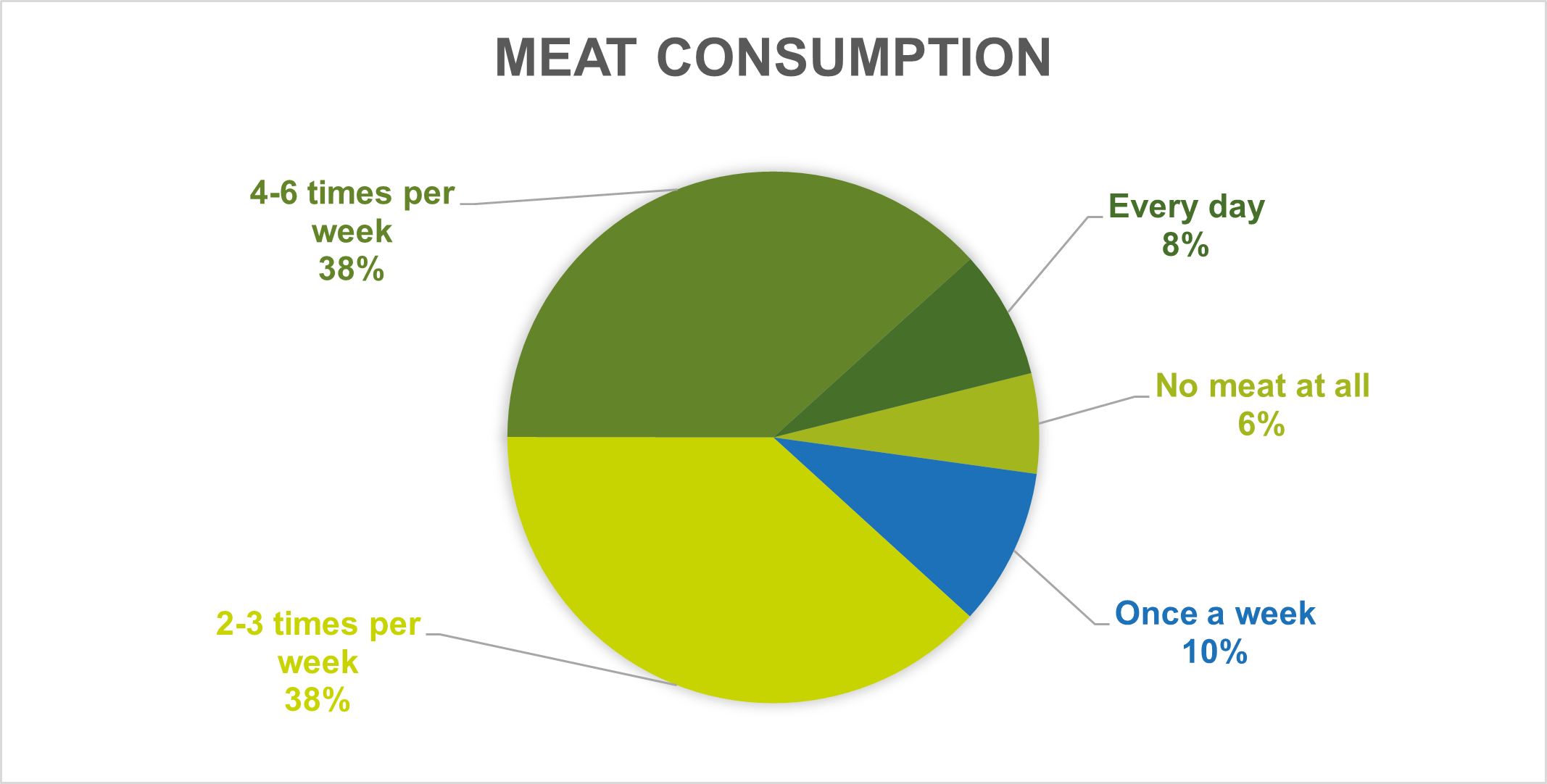
A remarkable 38% of participants eat meat two to three times a week, and the same percentage eats meat four to six times a week.
This could be related to the relatively higher prices of (most) fish in the fish market compared to meat prices. On average, small fish such as anchovies and sardines are the cheapest at around €4/kg. Sea bream and sea bass, for example, cost 8 €/kg and higher quality fish such as dentex or tuna reach prices of up to 30 €/kg.
Meat is more affordable and much more available in Rijeka. For example, Rijeka has a central fish market in the city center and only a few supermarkets that sell fresh fish. Meat is much easier to get in many local butcher stores, as well as in one of the 24 stores (supermarkets and hypermarkets) of five different retail chains spread all over the city.
This is also consistent with the results when asked where people most often buy their groceries:
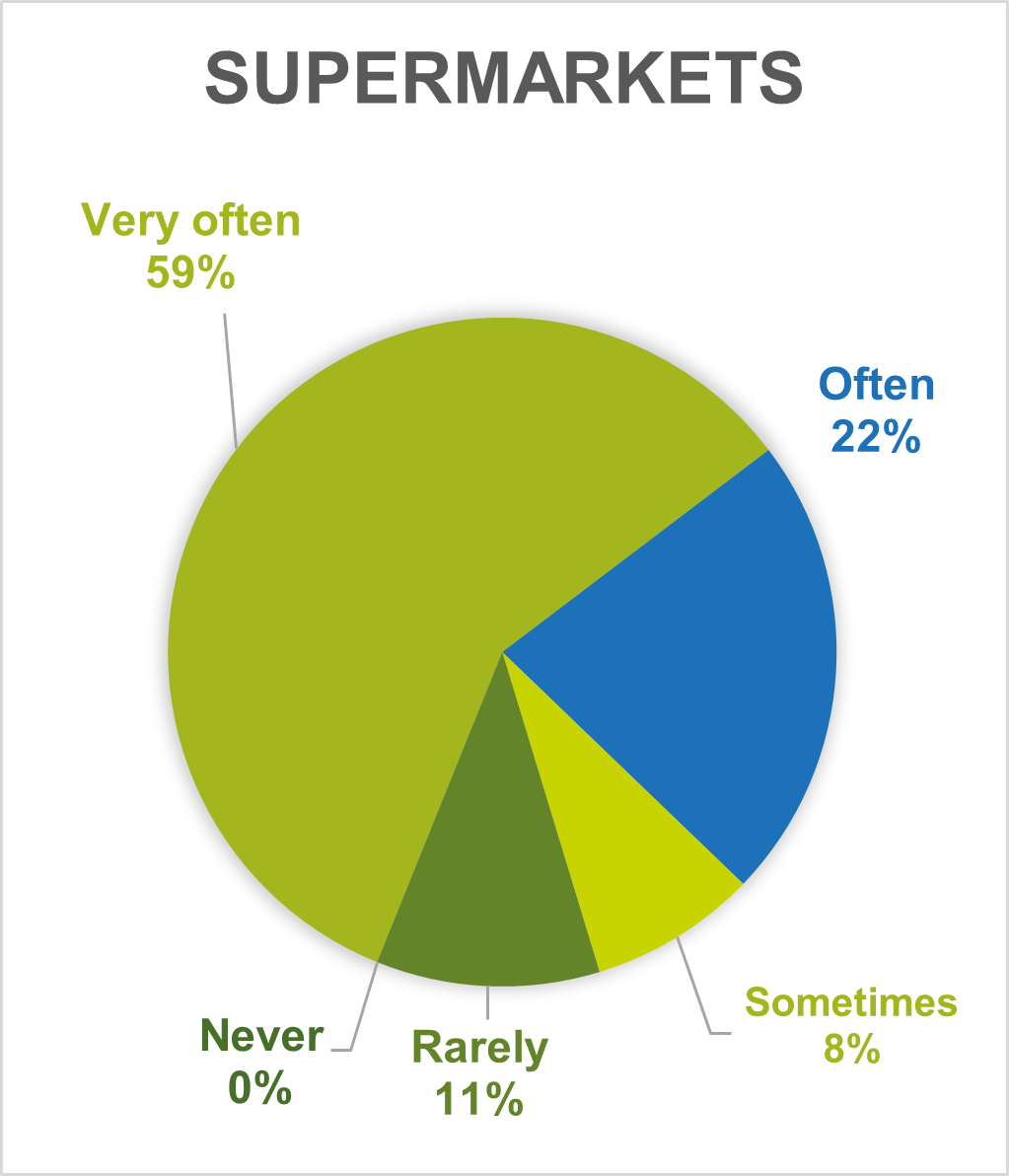
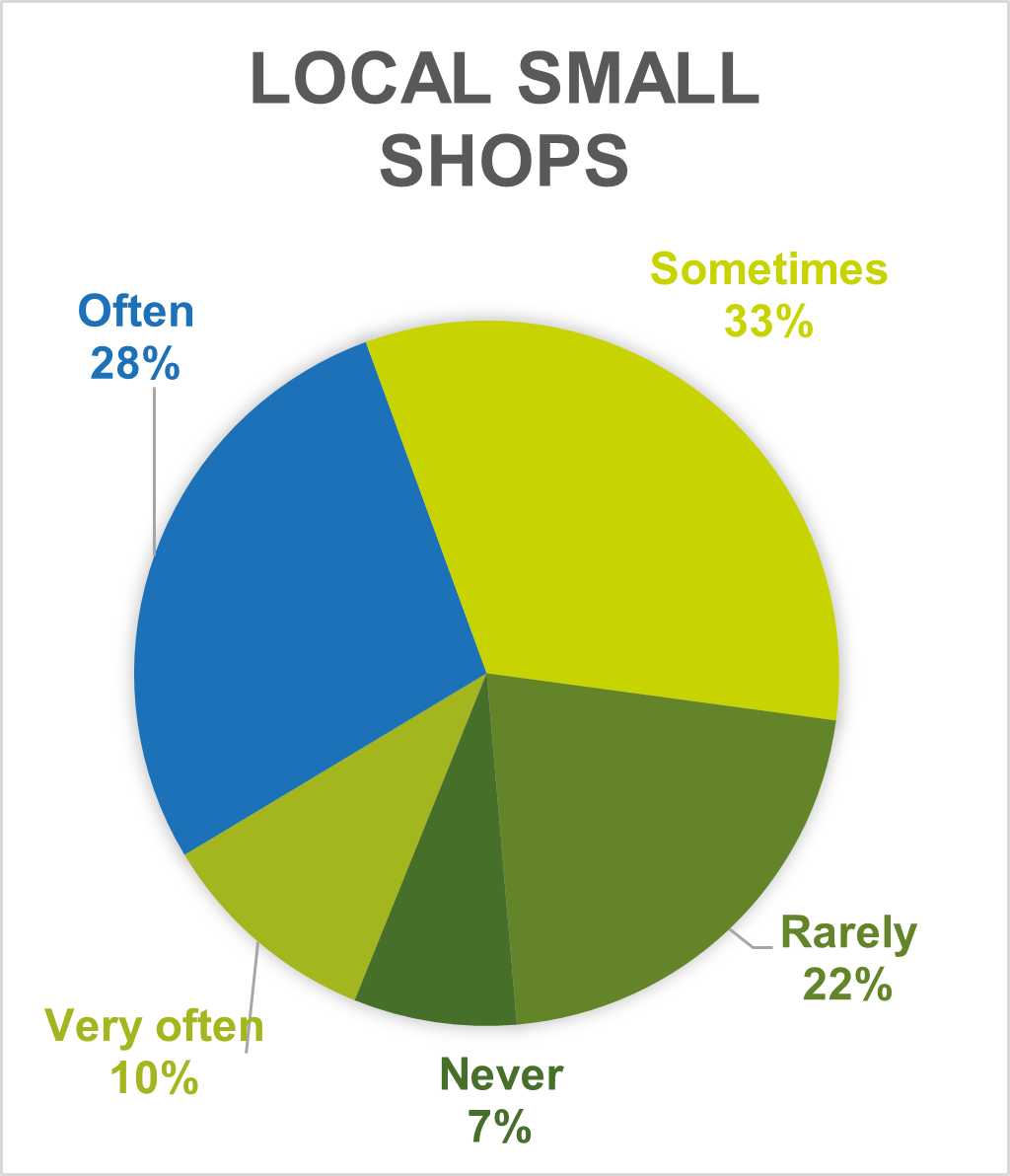


Most of the time, people buy their groceries in markets and supermarkets. After that, they choose local stores in the neighborhood. The main grocery store in the city is in the “sometimes” and “rarely” range, while the least represented method of grocery shopping is ordering online directly from the producer.
An interesting point in this research was also the frequency of preparation of meals at home:

Here the citizens of Rijeka are quite committed to cooking themselves, 36% of them cook fresh meals every day, 26% do it four to six times a week and 33% two to three times a week. This shows that cooking at home is still an important part of our lives, even though eating out in restaurants and ordering takeaway food is becoming more popular.
In addition, a large majority of people, 83%, prepare meals that can be reheated and eaten again, and 57% freeze leftover meals. On the other hand, 53% of our participants said they often buy food they do not end up using, and 50% of participants throw away food they did not use.
Encouraging people to adopt environmentally sustainable diets and relationships with food is crucial in today’s world. With limited resources, rising prices and too much waste that is becoming increasingly difficult to handle it is important to start implementing change.
Of course, encouraging people to alter their food choices is notoriously difficult since it is essentially changing their habits and lifelong standards. But with education on multiple levels, projects like Fusilli, events and community inclusive initiatives it is possible to make a shift towards a more sustainable food system.
